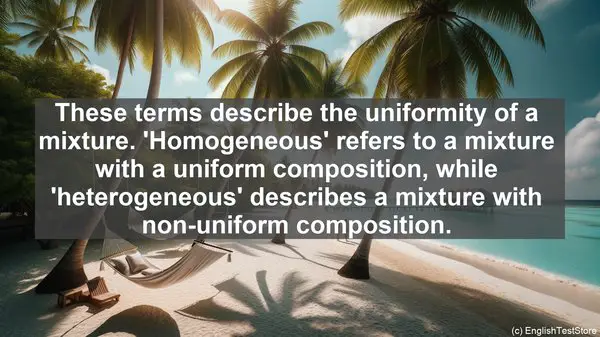Introduction
Welcome to this educational lesson on cryochemistry. Today, we’ll be focusing on a topic that often trips up even the most diligent students – commonly confused words. Let’s dive in!
1. Cryogenic vs. Cryonic
The words ‘cryogenic’ and ‘cryonic’ are often used interchangeably, but they have distinct meanings. ‘Cryogenic’ refers to anything related to extremely low temperatures, while ‘cryonic’ specifically relates to the preservation of organisms at such temperatures.
2. Solidify vs. Freeze
While both words describe the transition from a liquid to a solid state, ‘solidify’ is a more general term, applicable to any substance, whereas ‘freeze’ specifically refers to the solidification of a liquid due to temperature reduction.
3. Sublimation vs. Evaporation
Both ‘sublimation’ and ‘evaporation’ involve the conversion of a substance from a solid to a gaseous state. However, ‘sublimation’ occurs directly from the solid state, bypassing the liquid phase, whereas ‘evaporation’ happens from the liquid state.
4. Supercooled vs. Supersaturated
Though similar-sounding, ‘supercooled’ and ‘supersaturated’ have different meanings. ‘Supercooled’ refers to a substance existing in a liquid state below its freezing point, while ‘supersaturated’ describes a solution containing more solute than it can normally dissolve.

5. Exothermic vs. Endothermic
When it comes to reactions, ‘exothermic’ and ‘endothermic’ are often confused. An ‘exothermic’ reaction releases heat to the surroundings, while an ‘endothermic’ reaction absorbs heat from the surroundings.
6. Homogeneous vs. Heterogeneous
These terms describe the uniformity of a mixture. ‘Homogeneous’ refers to a mixture with a uniform composition, while ‘heterogeneous’ describes a mixture with non-uniform composition.
7. Solvent vs. Solute
In a solution, the ‘solvent’ is the substance that dissolves the ‘solute.’ For example, in saltwater, water is the solvent, and salt is the solute.
8. Dilute vs. Concentrated
When discussing the concentration of a solution, ‘dilute’ means a low concentration, while ‘concentrated’ indicates a high concentration of solute in the solvent.
9. Catalyst vs. Inhibitor
In a chemical reaction, a ‘catalyst’ increases the rate of reaction, while an ‘inhibitor’ slows it down or prevents it altogether.
10. Oxidation vs. Reduction
These terms are fundamental in redox reactions. ‘Oxidation’ involves the loss of electrons, while ‘reduction’ involves the gain of electrons.

